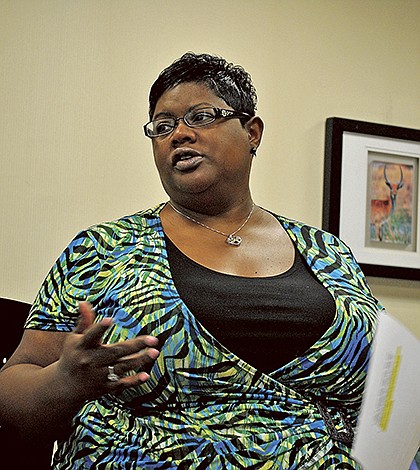- April 4, 2025
-
-
Loading

Loading

WEST ORANGE COUNTY — Local business representatives and personnel from the West Orange Chamber of Commerce and Orange County met June 3 at Holiday Inn Express Orlando-Ocoee East to continue discussions of revitalizing a corridor of State Road 50.
This fourth West Colonial Drive Stakeholders’ meeting featured an update on the development of a Colonial West Neighborhood Improvement District, delivered by Lavon Williams, manager of the Orange County Neighborhoods Office.
“A neighborhood improvement district is a mechanism that allows us to make improvements within the targeted area,” Williams said. “It allows us to be able to do things like beautification, security and all other kinds of physical and capital improvements within the district. It also lets us do mass marketing for the district.”
The process for creating this NID would start with amending the Orange County ordinance on NID criteria, which are antiquated and tough to use, Williams said. Then the Board of County Commissioners would need to pass an ordinance that finds a proliferation of crime in the area, meets three of eight environmental factors and establishes a board of directors and an advisory council, she said.
Among those environmental factors — a critical piece of Williams’ ordinance amendment — she believes four are easy to argue for this corridor: development difficulties due to zoning, topography, fragmentation or poor designs; properties in economic decline from significant flight or loss of business; negative public perceptions of crime or blight that hinders economics; and especially traffic congestion for vehicles and pedestrians.
If an ordinance passes, the Board of County Commissioners then would need to adopt an NID consistent with the county’s comprehensive plan as an amendment to that plan, Williams said.
“Once we get the ordinance amended, I think it’s going to take us between six to nine months to actually create the district and create the neighborhood improvement plan to be able to implement the neighborhood improvement district,” she said. “One of the advantages of a neighborhood improvement district is — only if (a value majority of) property owners agree —it allows us to tax ourselves in order to raise funds for the district.”
That could be by a flat rate or a millage rate based on property value, Williams said. A bigger benefit of declaring a tax of the district would be enhanced eligibility to receive state and federal grants, she said.
The West Orange Chamber of Commerce supports this NID and other initiatives to improve the business climate, Chamber President and CEO Stina D’Uva said.
Tim Habercamp, who represented Hardee’s and the Chamber, said getting stores back to the community was important to attract commerce to Pine Hills.
Collaboration would be more beneficial than to operate independently, and the investments from a small tax would be a much more valuable boon, Williams said. She encouraged area businesses to become ambassadors for this idea, and she will present the Colonial West NID to the Board of County Commissioners June 30.
As for the Pine Hills Neighborhood Improvement Plan, Williams said it recently received approval and would undergo development for designs and branding.
District 6 Orange County Commissioner Victoria Siplin attended the meeting, saying Pine Hills is a beautiful area that is thriving but in need of help, despite media portraying it as an area to fear. This community falls within her jurisdiction.
District 1 Commissioner S. Scott Boyd and District 2 Commissioner Bryan Nelson did not attend, because of concerns about sunshine laws due to comptroller issues with public notification.
OCSO UPDATE
Orange County Sheriff’s Office Sector III Commander of Uniform Patrols Division Cpt. Joe Picanzo said experience as an outsider with a fresh perspective would help him to help Pine Hills and the surrounding area, which had a drop in crime of about 10% last year.
He said funding for deputy body cameras has been in trial phases, including 25 in use for this sector, and that everyone involved has been pleased to have them for better documentation of facts. The biggest challenge has been data collection and storage as a management of public funds, with privacy among officials’ concerns, he said. Body cameras are for criminal investigations more than anything and are not for use on juveniles, Picanzo said.
Picanzo also noted how his office goes beyond the standards of diversity and sensitivity training, and that body cameras should always be on in community interactions. He said when that is not the case, officers will face consequences ultimately leading to firing, which he supports in getting rid of bad officers.
“Understand this: None of our deputies wants to go and fight somebody,” Picanzo said. “None of our deputies wants to encounter somebody in a neighborhood and have that person’s perception be that we’re stopping them because of race or sex or creed or culture. But unfortunately, our deputies are tasked with a role to enforce laws, and if deputies weren’t the final line, it would be anarchy. You can see in Maryland, in Baltimore, when the mayor told them to pull out, they had like 12 murders in two days. That wasn’t law enforcement killing people. In Chicago, you have in like a two-day period, 39 African Americans killed, and it wasn’t the police killing them.”
Picanzo mentioned diversity in his force and how officers and the community need to address cultural issues together.
Contact Zak Kerr at zkerr@wotimes.com.